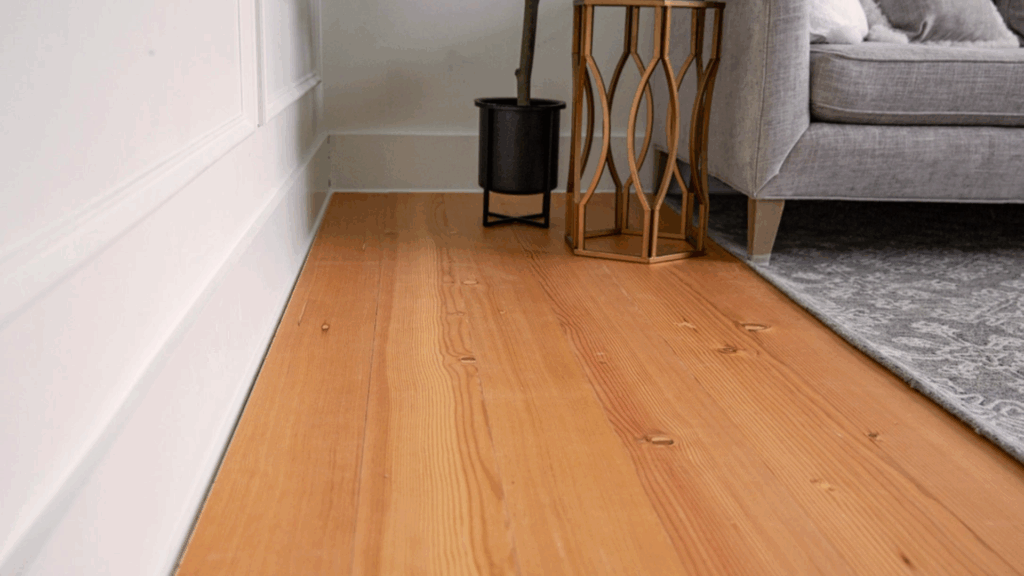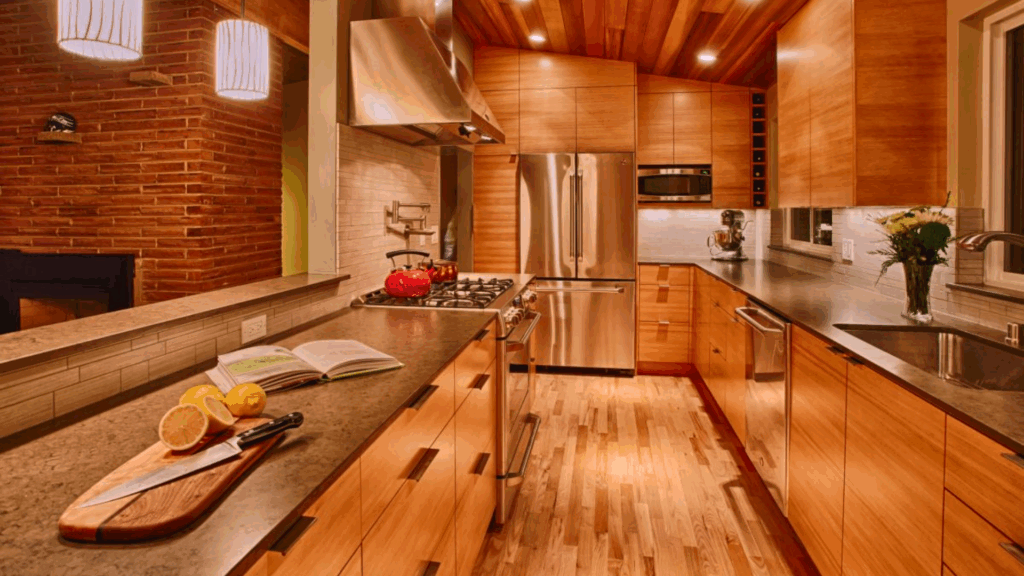Many homeowners and DIY fans, myself included, have wondered if fir counts as a hardwood. It might seem like a small detail, but this question actually matters more than you might think.
The answer affects how you use fir in building projects, furniture making, and other home fixes.
Fir is a popular wood choice, but understanding what it really is helps you decide when to use it and when to choose something else.
In this blog, I’ll walk you through:
- What fir actually is
- The main qualities that make fir stand out
- The pros and cons of using it
I’ve talked with wood experts and tested fir in different settings to bring you facts you can trust.
By the end of this post, you’ll know exactly when fir is the right choice for your project, and when it’s better to go with another option.
What Type of Wood Is Fir?

Fir is a softwood, not a hardwood, though this can be confusing since some fir types feel quite hard. My clients, who notice how strong fir can be in their projects, often ask me about this.
The difference between hardwoods and softwoods isn’t about how tough the wood feels. It’s about the type of tree it comes from.
Hardwoods grow from trees with broad leaves that often drop in fall (like oak or maple). Softwoods come from cone-bearing trees with needle-like leaves that usually stay green all year.
Fir belongs to the genus Abies in the pine family. You might know its cousins – pine and spruce. These trees grow quickly compared to hardwoods. But here’s something interesting:
Some fir types can be stronger than certain hardwoods! This is why the terms “hardwood” and “softwood” can mislead you.
When you’re picking wood for a project, don’t just ask, “is it hard or soft?” Instead, look at specific qualities like:
- How strong it is
- How it looks
- How much does it cost
- What do you need it to do
This way, you’ll choose the right wood every time.
Fir Wood Characteristics

1. Appearance
Fir wood shows a light yellow to reddish-brown color that many people find appealing. I’ve worked with many types of fir and noticed how the straight grain creates a clean, simple look.
You’ll find the texture feels uniform and smooth, without the dramatic patterns seen in some woods.
2. Workability
I find fir wood very friendly to work with in my shop. You can cut, saw, and sand it without much trouble.
When you drive nails or screws into fir, they usually stay put without splitting the wood. This makes your building tasks go faster.
You’ll also notice fir takes paint and stain well, though it may need sealing first for the best results.
3. Durability
While not as hard as oak or maple, fir holds up well for many uses. I’ve seen fir floors that look good after years of use, but they do show dents if you drop heavy items.
You should know that fir can get scratched more easily than true hardwoods. For places with heavy foot traffic or where items might fall, you might want something tougher.
4. Weight and Density
When you pick up a board of fir, you’ll notice it feels lighter than many other woods. This lower weight makes fir easier to carry, lift, and install.
I appreciate this when working on big projects! The lighter weight comes from its lower density, which explains why fir can dent more easily than denser woods.
Pros and Cons of Using Fir Wood
Based on my experience working with fir wood, I’ve created a simple table that shows its pros and cons. This will help you decide if fir is right for your project.
| Pros | Cons |
|---|---|
| Affordable price – Fir costs less than many other woods, saving you money on big projects. | Dents and scratches easily – Fir will show wear in high-traffic areas more than harder woods. |
| Easy to work with – You can cut, sand, and nail fir without special tools. | Not very water-resistant – Fir can warp or rot if left untreated in damp places. |
| Straight, stable grain – Fir tends to stay straight and true when properly dried. | Less fancy look – If you want wood with striking patterns, fir might seem plain. |
| Lightweight – You won’t strain your back carrying and installing fir boards. | Needs more sealing – You’ll need to apply more finish to protect the fir properly. |
| Takes paint well – Fir gives a smooth painted finish with less effort. | Not for outdoor use – Unless treated, fir breaks down quickly outside. |
| Good strength-to-weight ratio – Fir offers decent strength without heavy weight. | Resin pockets – Some fir boards have sticky spots that can affect finishing. |
Best Uses for Fir Wood

Framing and Construction
I’ve used fir countless times for building frames and structures. Fir stands as one of the top choices for house framing because it gives you good strength without excessive weight.
You’ll find it used for wall studs, floor joists, and roof rafters in homes across the country.
When I’m building a house frame, I pick fir for its straight grain and reliable performance under load.
Interior Trim and Molding
Fir makes excellent trim pieces for your home. The clean lines and smooth finish of fir moldings add a nice touch without breaking your budget.
I’ve installed fir baseboards, crown moldings, and door casings that look great for years. You’ll notice fir takes paint very well, giving you a smooth, even finish.
Furniture
When building budget-friendly furniture with a country or rustic style, fir often becomes my go-to wood.
It works well for bookshelves, tables, and storage pieces where you don’t need extreme hardness.
You can build a solid dining table from fir that will serve your family for many years. Just be aware that it will show some wear marks over time, which many people feel adds character to these styles.
Paneling and Doors
I’ve restored many old homes where fir paneling and doors were key features. The warm, natural look of fir walls makes spaces feel cozy and welcoming.
Your cabin or cottage project would benefit from fir’s easy-to-work-with nature.
Fir doors have been popular for decades because they stand up to daily use while maintaining their good looks with basic care.
Fir Wood vs. Other Common Woods
I’ve created a comparison table to help you understand how fir stands up against other popular woods you might consider for your projects.
| Comparison Point | Fir | Pine | Oak | Cedar |
|---|---|---|---|---|
| Wood Type | Softwood | Softwood | Hardwood | Softwood |
| Strength | Moderate strength with straight grain | Softer with more knots | Very strong and durable | Moderate strength |
| Cost | Budget-friendly | Most affordable option | More expensive | Pricier than fir |
| Weight | Lightweight | Very light | Heavy | Light to medium |
| Best Uses | Framing, trim, and indoor projects | Furniture, crafts, and painted items | Flooring, fine furniture, cabinets | Outdoor projects, closets, chests |
| Durability | OK indoors, poor outdoors | Poor to fair | Excellent | Very good, even outdoors |
| Maintenance | Needs regular sealing indoors | Needs lots of protection | Minimal upkeep needed | Little maintenance required |
Is Fir the Right Choice for Your Project?
Picking the right wood makes all the difference in how your project turns out. I’ve seen people choose Fir when they should have used something else, and vice versa.
This is my honest take on when fir makes sense for you – and when it doesn’t.
Fir works best for indoor projects where budget matters more than extreme toughness.
If you’re building basic furniture, shelving, or decorative items that won’t see heavy use, fir offers good value. I recommend fir for:
- Wall framing and basic construction
- Interior trim and moldings
- Wall paneling
- Craft projects
But be careful! Fir isn’t ideal for everything. For floors that will see heavy foot traffic, oak or maple will serve you better despite the higher cost.
I’ve replaced too many dented fir floors to count. For outdoor projects, cedar or pressure-treated pine beats fir every time.
Fir breaks down quickly when exposed to moisture and sun. Your deck or garden bench needs something that can handle the elements.
For fine cabinetry or heirloom furniture, harder woods will look better longer. The scratches and dents that appear in fir can ruin the look of pieces meant to last generations.
Your budget, the item’s purpose, and where you’ll use it should guide your choice. Be honest about how much wear the wood will face, and choose accordingly.
Conclusion
Fir is not a hardwood, but that doesn’t make it a bad choice. I’ve shown you that fir offers plenty of good points for the right projects.
You now know that the “hardwood vs. softwood” label tells you about the tree type, not always how strong the wood is.
Fir shines when you need affordable, easy-to-work-with wood for indoor projects. Its straight grain and clean look work well for framing, trim, and simple furniture.
But remember:
- For heavy-use items, you might need tougher wood
- For outdoor projects, pick something more weather-resistant
- For fancy furniture, consider woods with more character
The smart approach isn’t asking “is this wood hard or soft?” but rather “is this the right wood for my specific needs?”
Match your wood to your project goals, budget, and where you’ll use it. When you do that, fir might be exactly what you need – or not at all what you want.

